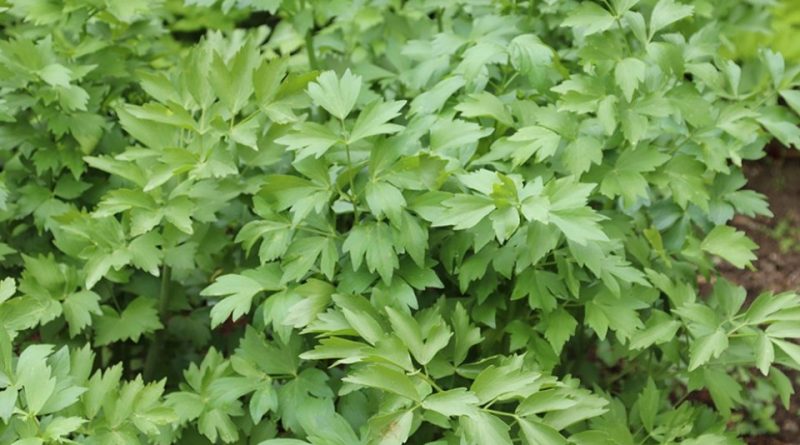Levisticum officinale
Levisticum officinale
The lovage or mountain celery (Levisticum officinale W.D.J. Koch, 1824) is a perennial herbaceous species of the Apiaceae family.
Systematic –
From the systematic point of view it belongs to the Domain Eukaryota, Kingdom Plantae, Subarranean Tracheobionta, Division Magnoliophyta, Class Magnoliopsida, Sottoclasse Rosidae, Order Apiales, Family Apiaceae and therefore to the Genus Levisticum and to the species L. officinale.
Etymology –
The term Levisticum derives from an alteration of ligusticum, Ligurian, of Liguria, although it has nothing to do with Liguria. The specific workshop epithet comes from offícina medieval workshop: usable in pharmaceuticals, herbal medicine, liquor, perfumery and the like.
Geographic Distribution and Habitat –
The Levistic is a perennial herbaceous species with probable origins from South-West Asia. It is a rustic plant that is found up to 1800 m s.l.m., in uncultivated land and in orchards where sometimes it is naturalized. In Italy it is still a rare species.
Description –
Levisticum officinale is a perennial herbaceous species with an erect stem that can grow up to 2 meters. It has 2-3 pennatosette leaves, divided into rhomboid and toothed segments at the margin. The flowers are yellowish, gathered in umbels with up to 20 rays. The fruits (called seeds) are elliptic achenes and equipped with ribs.
Cultivation –
The mountain celery can be cultivated starting from the sowing that is made in pots, or seedlings, containing light soil, using the seeds of the previous year. When the seedlings are sufficiently developed, they must be transplanted into larger pots or full earth, in a semi-sombric area. The multiplication of this plant can also be done by dividing the stumps in the autumn period. For details of the cultivation technique refer to the following sheet.
Uses and Traditions –
The lovage, or mountain sedano, was abundantly used in the cuisine of ancient Rome. In fact, it is found in many of Apicius’ recipes, for example in De re coquinaria. In the past it was also much appreciated by Benedictine monks who, in the Middle Ages, spread it in gardens and courtyards, especially in northern Europe where today it is still very used. This plant uses the leaves, to be used fresh, in risotto, broths , meats, stews, chicken, cod; the ripe seed of this plant is used in liqueurs, salads, squashed; the aroma of the plant is similar to celery, but has a flavor close to celery, but with a much more intense, pungent scent that makes it very pleasant. The lovage is used as a substitute for an Indian spice, Ajowan, being the first most common in Europe.The Levisticum officinale has therapeutic properties: depurative, eupeptic, digestive, carminative and diuretic.Fa this plant can be obtained an infusion, indicated for rheumatism and can be applied to wounds as an antiseptic, or drunk to stimulate digestion. The lovage is second only to capers for quercetin content.
Preparation Mode –
For its consumption, the leaves of the Levistic are harvested during the vegetative period and used fresh. The roots must be uprooted in the autumn period, washed, cut into pieces and dried. The umbrellas should be cut when they are ripe, dried, then harvest the fruits (seeds) by slamming them.The fresh leaves are used to give flavor to omelettes, salads, minestrone, fresh cheese and fish. The roots are used to prepare aromatic liqueurs. The seeds are used to flavor jams and sweets.
Guido Bissanti
Sources
– Acta Plantarum – Flora of the Italian Regions.- Wikipedia, the free encyclopedia.- Treben M., 2000. Health from the Pharmacy of the Lord, Advice and experience with medicinal herbs, Ennsthaler Editore- Pignatti S., 1982. Flora d ‘Italia, Edagricole, Bologna.- Conti F., Abbate G., Alessandrini A., Blasi C. (edited by), 2005. An annotated checklist of the Italian vascular flora, Palombi Editore.
Warning: Pharmaceutical applications and alimurgical uses are indicated for informational purposes only and do not in any way represent a medical prescription; there is therefore no liability for their use for curative, aesthetic or food purposes.


